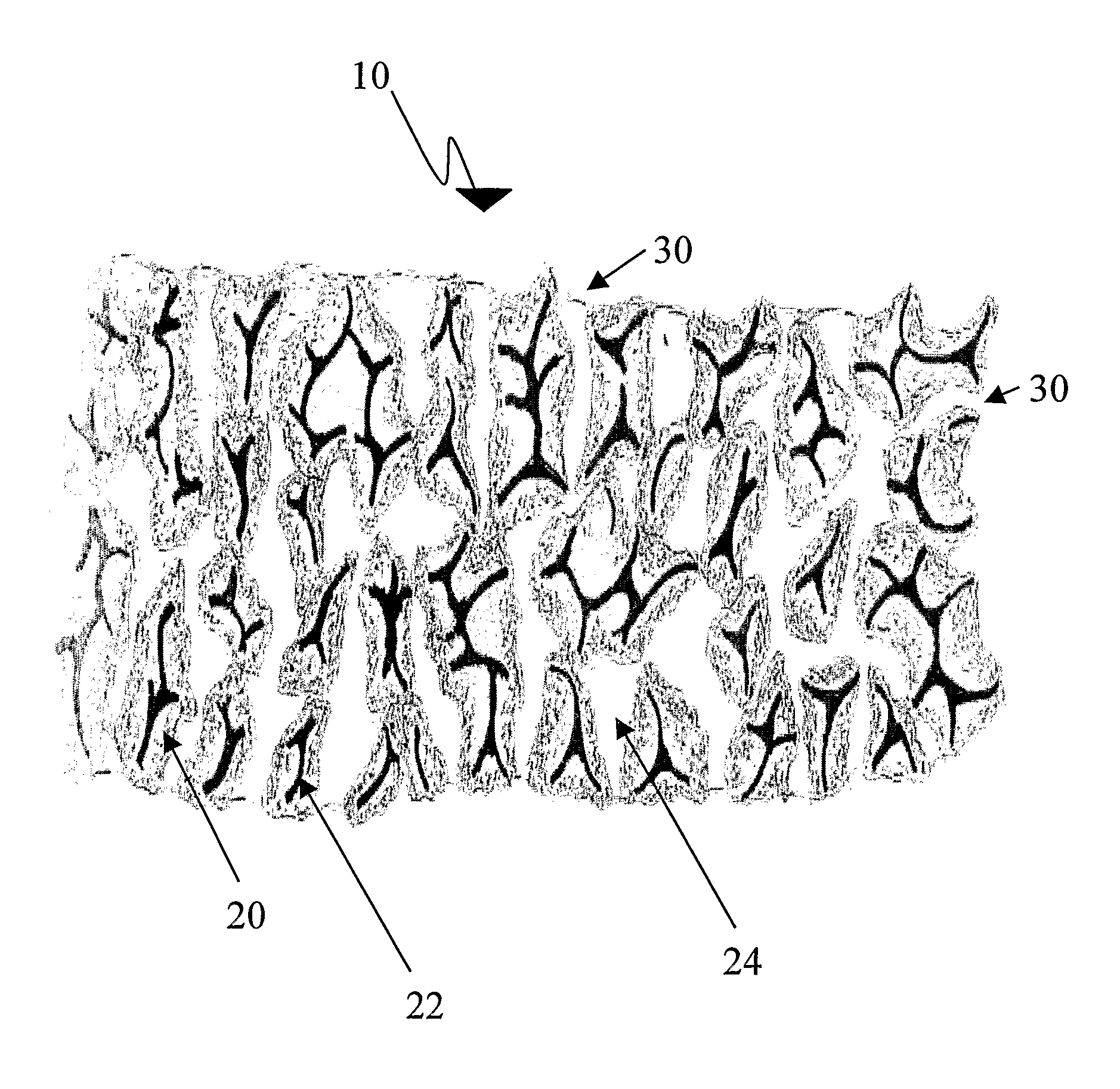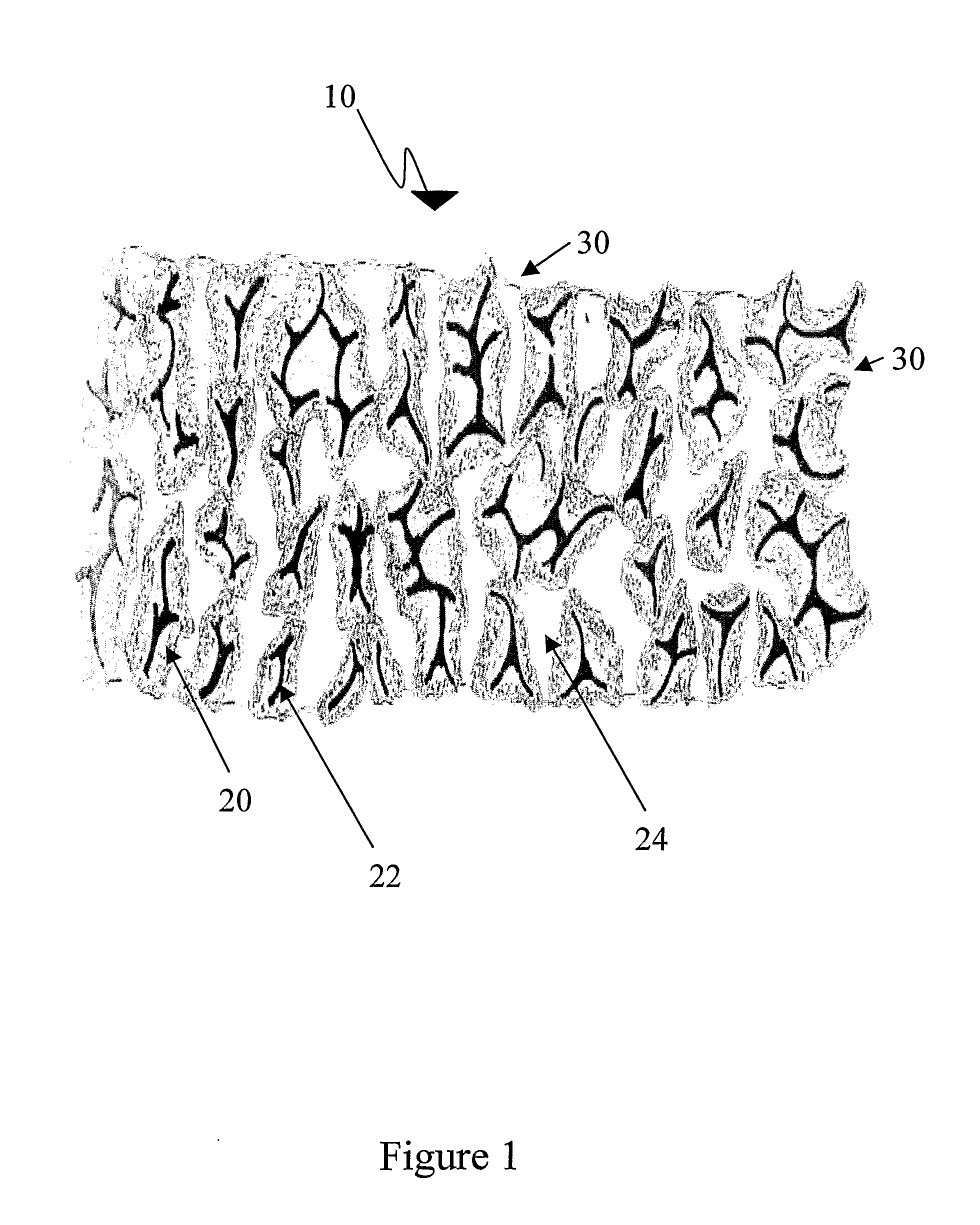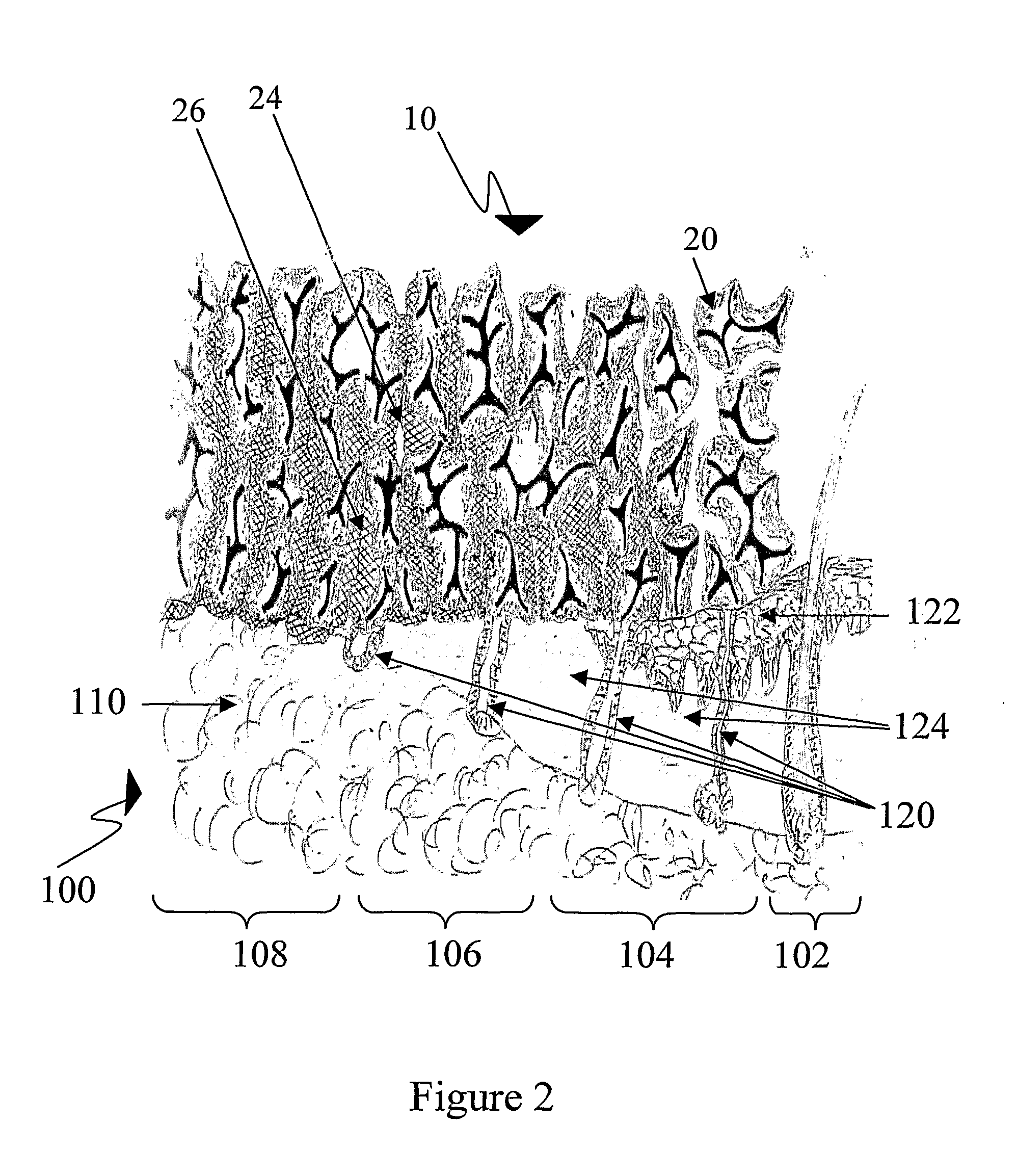Interface layer wound dressing
a wound dressing and interface layer technology, applied in the field of wound dressings, can solve the problems of new clinical situation that cannot be effectively addressed by prior art wound dressings, and achieve the effects of avoiding undesirable growth of granulation tissue or epithelium, fibroblastic activity modulation, and tissue preservation
- Summary
- Abstract
- Description
- Claims
- Application Information
AI Technical Summary
Benefits of technology
Problems solved by technology
Method used
Image
Examples
example 1
General Example 1
Treatment of a Clean, Viable Dermal Wound Bed
[0188]The serum excreted at the wound surface advances along the conduit wall, absorbed by the hyaluronic acid therein, hydrating it completely or partially (as depicted in FIG. 2) depending on the fluid quantity (moisture) at the wound surface. The moistened hyaluronic acid prevents desiccation of the healing wound enhancing its epithelialization that is guided by the dressing surface. The complex of hyaluronic acid and fibrin in the excreted fluids adheres the dressing to the wound, forming an “artificial, reinforced scab” preventing propagation of any infection foci. As the epithelialization progresses (usually on the dermal remnants) as depicted in FIG. 3, the keratinized epidermal layer detaches the wound dressing from the wound. The detached wound dressing areas can be sheared off by scissors. The adherent wound dressing is left on place allowing early wound care in outpatient conditions. As long as this “artificial...
example 2
General Example 2
Treatment of a Wound Bed with Partially Persistent Eschar or Light Contamination
[0189]As described in General Example 1, the serum excreted at the wound surface advances along the conduit wall, absorbed by the hyaluronic acid, hydrating it completely or partially (as depicted in FIG. 2), depending of the fluid quantity (moisture) at the wound surface. The moistened hyaluronic acid prevents desiccation of the healing wound enhancing its epithelialization that is guided by the dressing surface. The moist environment together with the normal inflammatory reaction promote the maceration of the eschar remnants (“autolysis”) and resolution of the contaminated foci. The autolysis products absorbed by the hyaluronic acid together with fibrin in the excreted fluids adheres the dressing to the wound, forming an “artificial, reinforced scab” preventing propagation of any infection foci. As in General Example 1, the epithelialization progresses (usually on dermal remnants) as d...
example 3
General Example 3
Treatment of a Wound Bed with Persistent, Heavily Contaminated Eschar
[0190]As described in General Examples 1 and 2, the serum and pus excreted at the wound surface advance along the conduit wall, are absorbed by the hyaluronic acid, hydrating it completely or partially (as depicted in FIG. 2), depending of the fluid quantity (moisture) at the wound surface. The nature of the pus changes and stain the wound dressing surface allowing accurate microorganism culture, diagnosis and treatment. The moistened hyaluronic acid prevents desiccation of the healing wound enhancing its epithelialization that is guided by the dressing surface. The moist environment together with the normal or increased inflammatory reaction promote the maceration of the eschar remnants (“autolysis”) and usually resolution of the contaminated foci. The autolysis products absorbed by the hyaluronic acid together with fibrin in the excreted fluids adheres the dressing to the wound, forming an “artif...
PUM
| Property | Measurement | Unit |
|---|---|---|
| thickness | aaaaa | aaaaa |
| diameter | aaaaa | aaaaa |
| diameter | aaaaa | aaaaa |
Abstract
Description
Claims
Application Information
 Login to View More
Login to View More - R&D
- Intellectual Property
- Life Sciences
- Materials
- Tech Scout
- Unparalleled Data Quality
- Higher Quality Content
- 60% Fewer Hallucinations
Browse by: Latest US Patents, China's latest patents, Technical Efficacy Thesaurus, Application Domain, Technology Topic, Popular Technical Reports.
© 2025 PatSnap. All rights reserved.Legal|Privacy policy|Modern Slavery Act Transparency Statement|Sitemap|About US| Contact US: help@patsnap.com



